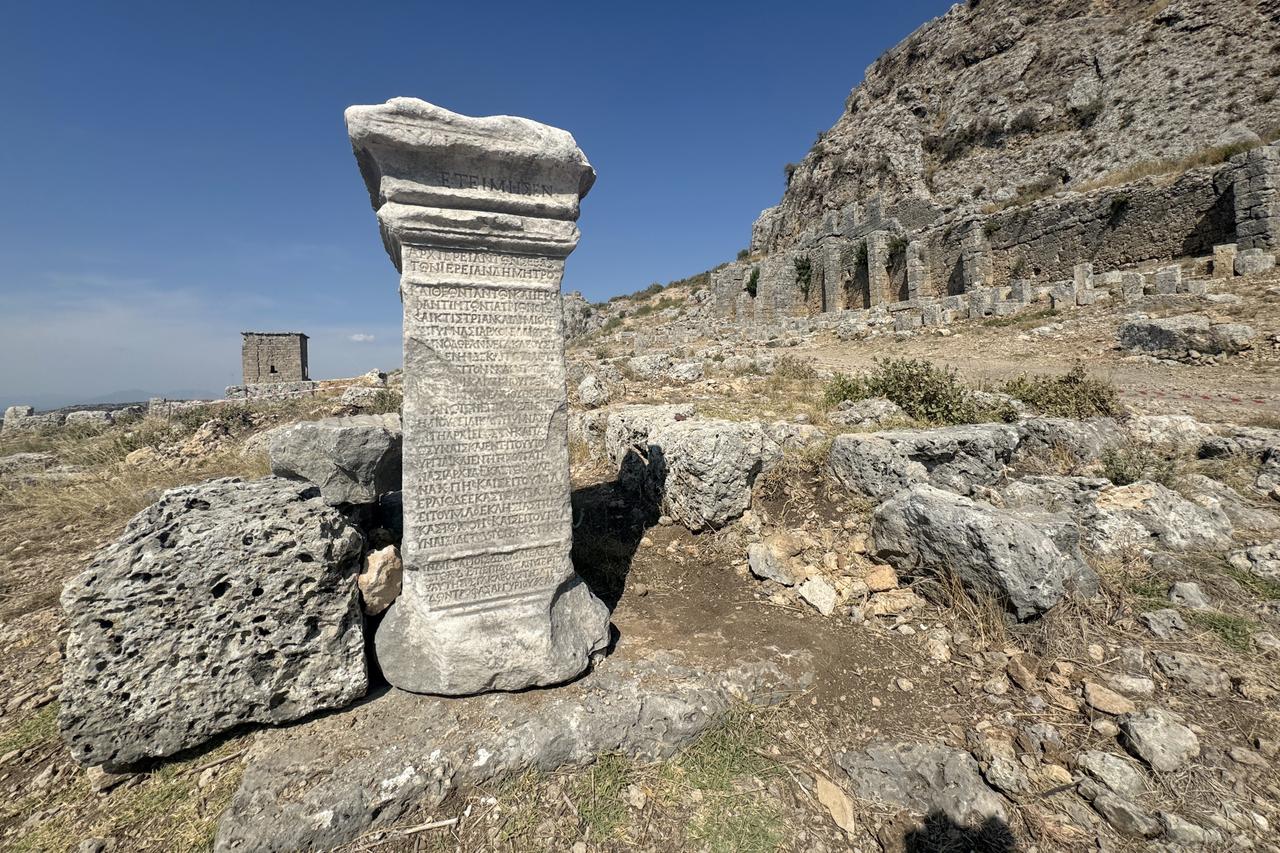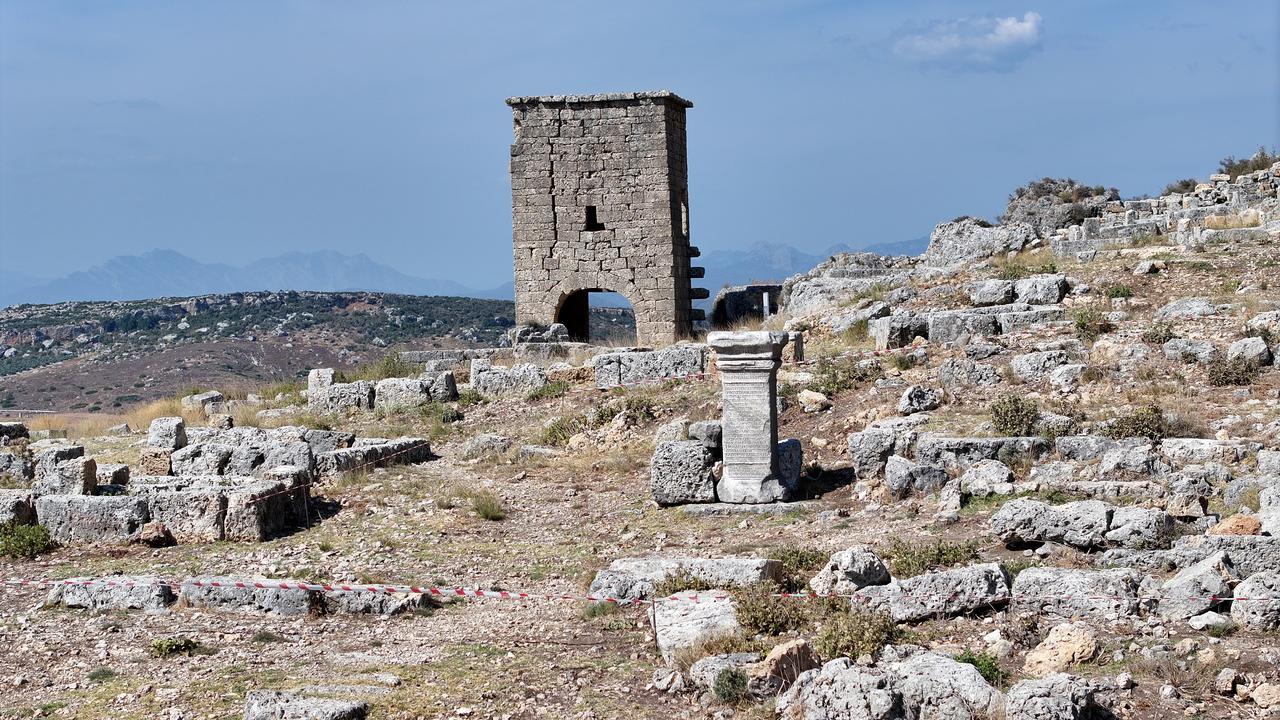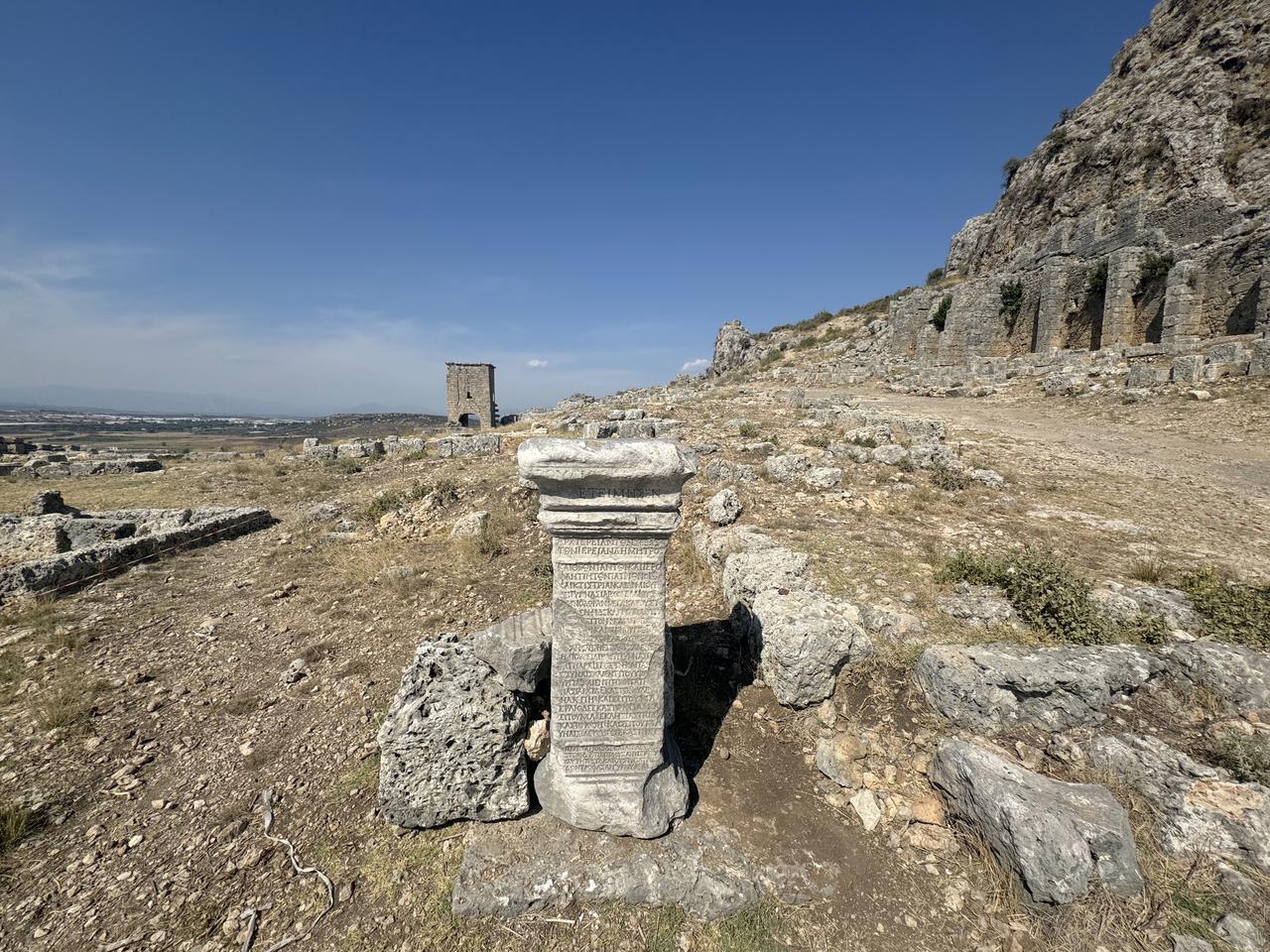
Archaeological excavations at the ancient city of Sillyon in Antalya’s Serik district have uncovered the tomb of Menodora, a Roman-era woman renowned for financing public buildings and founding a charitable institution for children.
The discovery came during work along the city’s main street, where archaeologists identified a group of elite burials.
One tomb, set apart in a distinctive location, was determined to belong to Menodora, who lived in the second century A.D.
An inscription already known from previous years, which detailed her contributions to the city, has now been re-erected near the burial site.
Excavation director Associate Professor Murat Taskiran of Pamukkale University explained that Menodora was not only remembered as a benefactor but also as one of the wealthiest and most influential women of the ancient Mediterranean.

Historical records reveal that Menodora’s life was marked by loss. She lost her father, Megakles, early, then her husband, Apollonios, and later her son.
Taskiran noted that despite these personal tragedies, she dedicated her fortune and energy to Sillyon’s welfare: “She put her pain aside, devoted herself to her city, and spent the rest of her life working for its revival.”
The inscription, consisting of 26 lines, summarizes Menodora’s extensive civic contributions.
She held an official position comparable to a city council leader, managed the gymnasium—a facility combining education and athletics—and established a foundation for children.
She also commissioned monumental structures, temples, baths, and a stadium.
Archaeologists estimate that she spent around 300,000 denarii, a vast sum in silver coins, which makes her one of antiquity’s most generous female benefactors.

According to Taskiran, Menodora transformed Sillyon, a settlement built on challenging terrain, into a structured Mediterranean city.
Her example, he added, demonstrates “how a city could be rebuilt through the vision and determination of a woman.”
Conservation and landscaping work around the tomb is ongoing to help future visitors visualize how elites of the Roman era were commemorated in burial monuments.